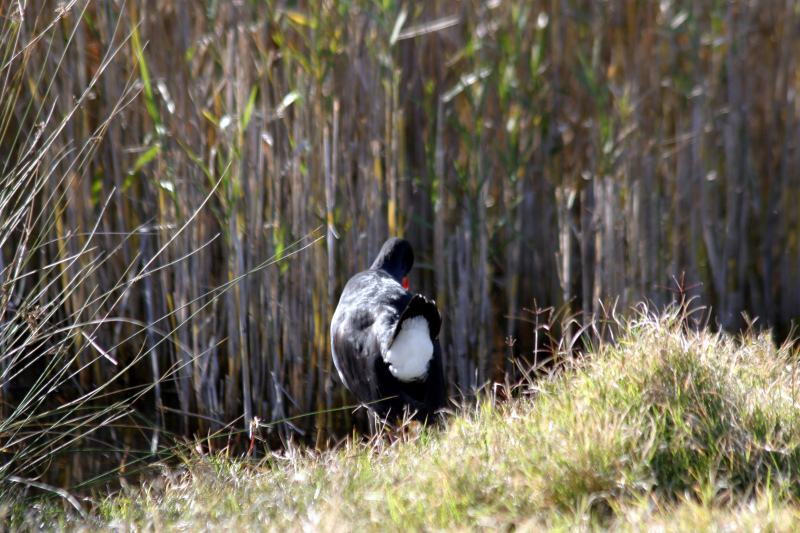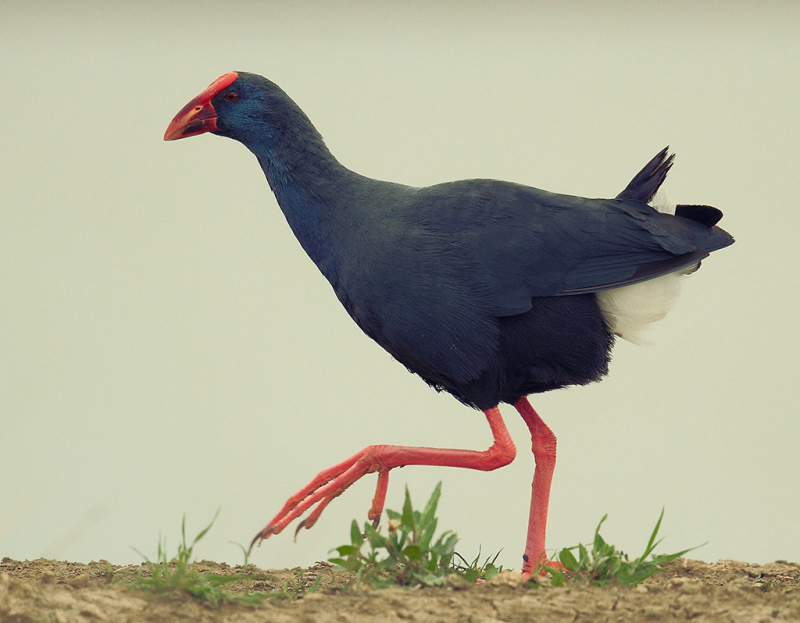
©Charlie: Western Swamphen showing the white tail feathers. The tail continually flicks to display these feathers.
Colours
Distinguishing features
There are 13 or more subspecies of the Purple Swamphen (depending on the authority) which differ mainly in plumage colour. The subspecies groups are: P. p. porphyrio in the Mediterranean, P. p. madagascariensis in Africa, P. p. poliocephalus in tropical Asia, P. p. indicus in Indonesia and P. p. pulverulentis in the Philippines.
European birds are overall purple-blue, African and south Asian birds have a green back, and Australasian and Indonesian birds have black backs and heads.
P. p. melanotus occurs in north and east Australia, New Zealand and the surrounding islands. It has a small shield, shorter toes, black upperparts, and a purple throat and breast. (Wikipedia)
Size
- From 44 cm to 48 cm (Length of specimen)
Wingspan
- From 90 cm to 100 cm
Synonyms
Distribution
Distribution and habitat preferences
The Purple Swamphen prefers wet areas with high rainfall, swamps, lake edges and damp pastures. (Wikipedia)
Local abundance
- Cape Kidnappers, New Zealand: abundant
Diet
It clambers through the reeds, eating the tender shoots and vegetable-like matter. They have been known to eat eggs, ducklings, small fish and invertebrates such as snails. They have even been known to attack large eels, however there is no consensus amongst ornithologists if they actually eat eel. (Wikipedia)
